Resume Guidlines
Learn how to write a well structured Resume with our Resume guidelines. And standout your resume among others. Our guidelines are helpful for all types of people who are looking for a job
1000+ Reviews on Trustpilot
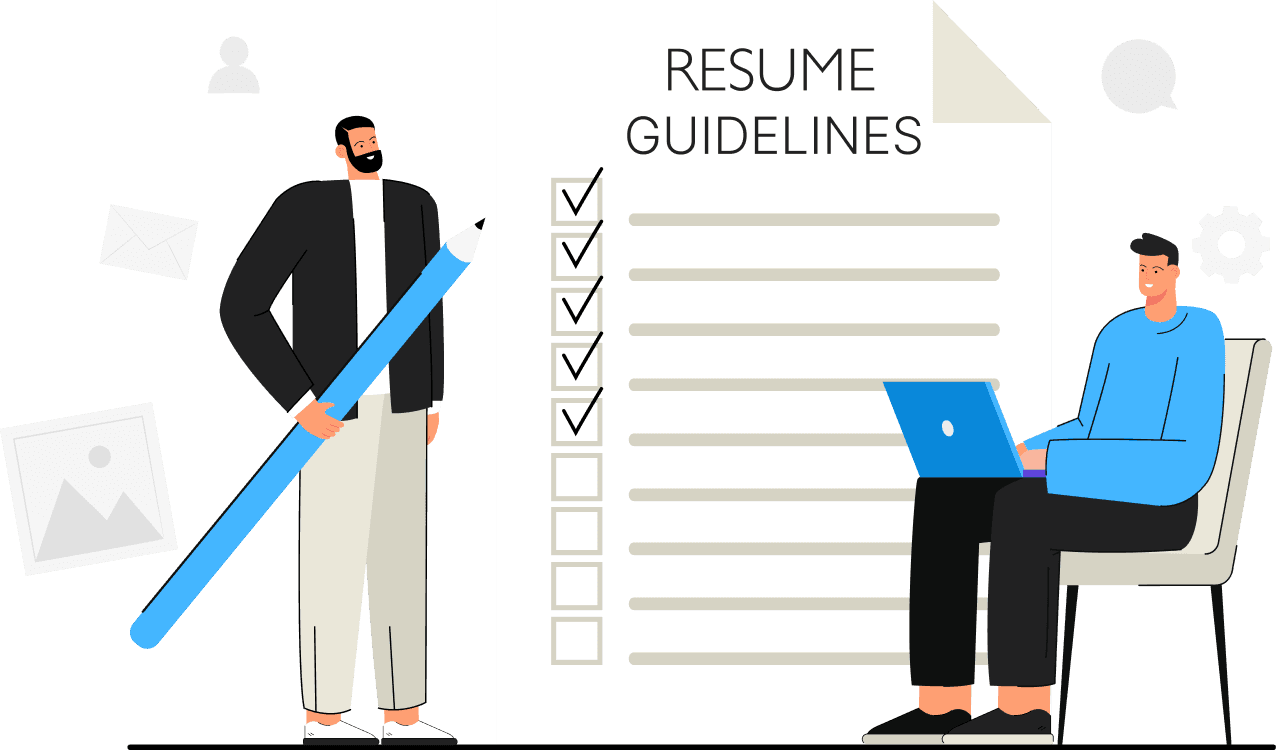
Resume Guidlines
Learn how to write a well structured Resume with our Resume guidelines. And standout your resume among others. Our guidelines are helpful for all types of people who are looking for a job
1000+ Reviews on Trustpilot

Resume Guidlines
Learn how to write a well structured Resume with our Resume guidelines. And standout your resume among others. Our guidelines are helpful for all types of people who are looking for a job
1000+ Reviews on Trustpilot

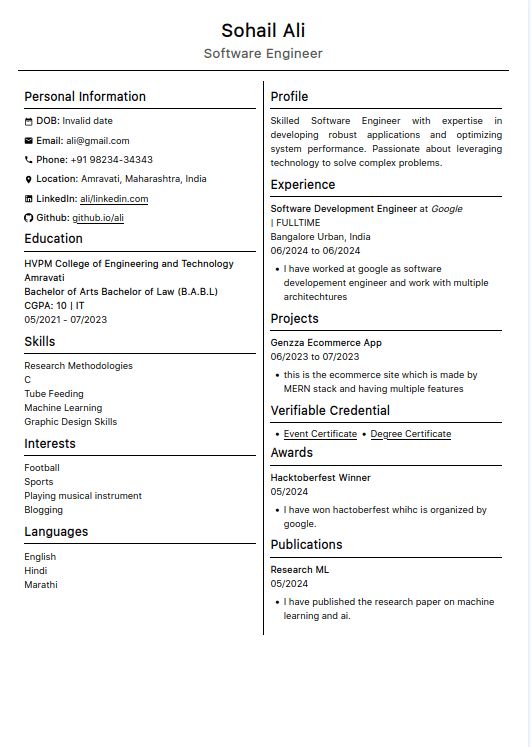
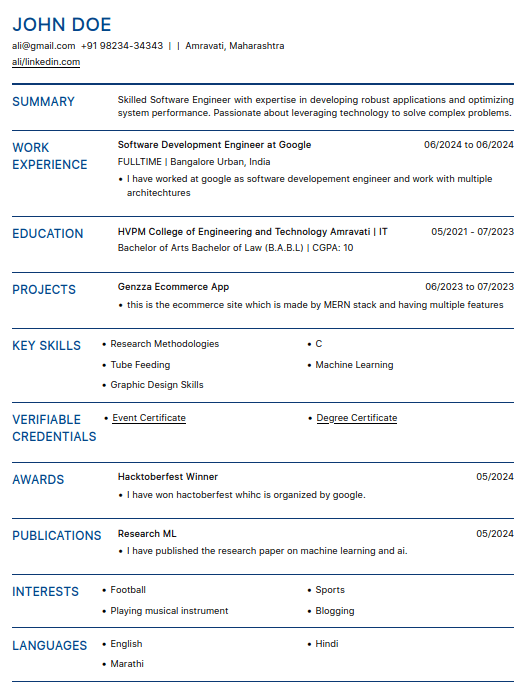
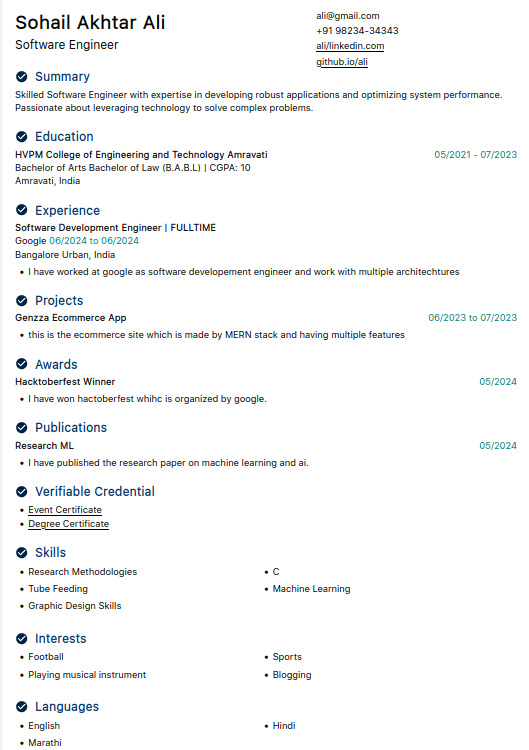
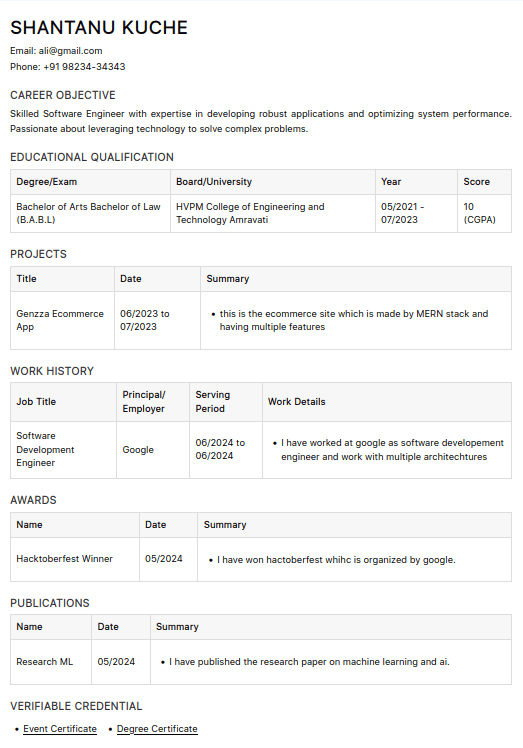
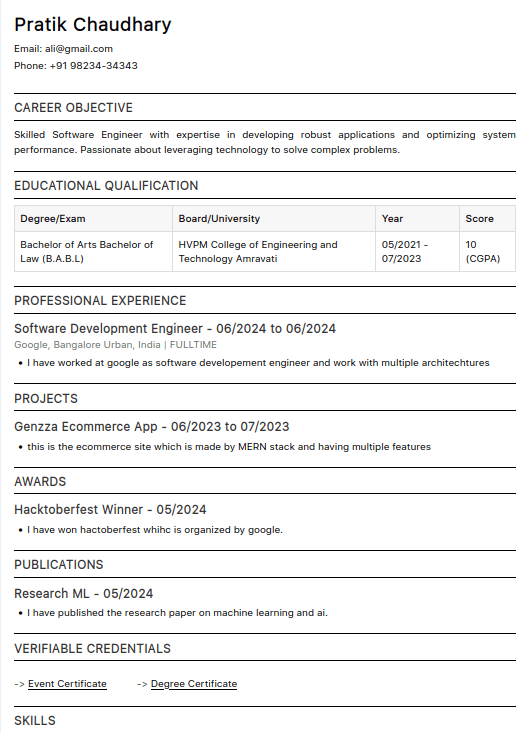
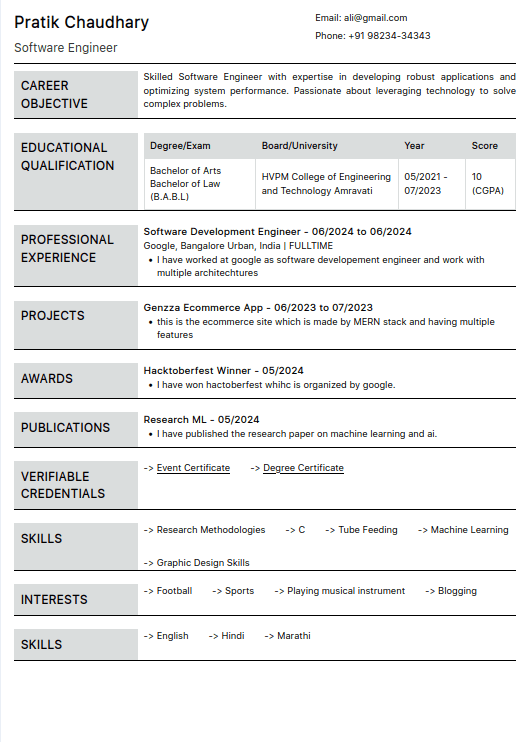












When it comes to job applications, your resume is your first impression. It’s not just a summary of your work experience; it's a strategic tool that highlights your strengths and aligns you with the job you want. At TrueResume, we understand the importance of creating a resume that stands out. Here’s a detailed guide on how to craft a winning resume.
When it comes to job applications, your resume is your first impression. It’s not just a summary of your work experience; it's a strategic tool that highlights your strengths and aligns you with the job you want. At TrueResume, we understand the importance of creating a resume that stands out. Here’s a detailed guide on how to craft a winning resume.
When it comes to job applications, your resume is your first impression. It’s not just a summary of your work experience; it's a strategic tool that highlights your strengths and aligns you with the job you want. At TrueResume, we understand the importance of creating a resume that stands out. Here’s a detailed guide on how to craft a winning resume.
1. Choose the Right Resume Format
The structure of your resume is crucial. There are three main types of resume formats:
Chronological: This is the most common format. It lists your work experience in reverse chronological order, starting with your most recent job. This format is ideal if you have a strong work history in the field you're applying for.
Functional: This format focuses on your skills rather than your work history. It’s ideal for those changing careers or with gaps in their employment.
Combination: This format merges both the chronological and functional formats, showcasing your skills at the top and then listing your work experience. It's a great choice if you want to emphasize both your skills and experience.
Choose the format that best suits your career path and the job you're applying for.
1. Choose the Right Resume Format
The structure of your resume is crucial. There are three main types of resume formats:
Chronological: This is the most common format. It lists your work experience in reverse chronological order, starting with your most recent job. This format is ideal if you have a strong work history in the field you're applying for.
Functional: This format focuses on your skills rather than your work history. It’s ideal for those changing careers or with gaps in their employment.
Combination: This format merges both the chronological and functional formats, showcasing your skills at the top and then listing your work experience. It's a great choice if you want to emphasize both your skills and experience.
Choose the format that best suits your career path and the job you're applying for.
1. Choose the Right Resume Format
The structure of your resume is crucial. There are three main types of resume formats:
Chronological: This is the most common format. It lists your work experience in reverse chronological order, starting with your most recent job. This format is ideal if you have a strong work history in the field you're applying for.
Functional: This format focuses on your skills rather than your work history. It’s ideal for those changing careers or with gaps in their employment.
Combination: This format merges both the chronological and functional formats, showcasing your skills at the top and then listing your work experience. It's a great choice if you want to emphasize both your skills and experience.
Choose the format that best suits your career path and the job you're applying for.
2. Tailor Your Resume to the Job
A generic resume won’t cut it in today’s competitive job market. Tailor your resume to each job you apply for by aligning your skills and experiences with the job description. Highlight the qualifications and experiences that make you the perfect fit for the role.
2. Tailor Your Resume to the Job
A generic resume won’t cut it in today’s competitive job market. Tailor your resume to each job you apply for by aligning your skills and experiences with the job description. Highlight the qualifications and experiences that make you the perfect fit for the role.
2. Tailor Your Resume to the Job
A generic resume won’t cut it in today’s competitive job market. Tailor your resume to each job you apply for by aligning your skills and experiences with the job description. Highlight the qualifications and experiences that make you the perfect fit for the role.
3. Craft a Compelling Summary or Objective
Your resume summary or objective is the first thing recruiters see. It should be a concise statement that captures your career goals and what you bring to the table.
Resume Summary: Ideal for experienced professionals, it should summarize your key achievements and professional experience.
Objective Statement: Suitable for entry-level candidates or those changing careers, it should state your career goals and what you aim to achieve in the role you're applying for.
3. Craft a Compelling Summary or Objective
Your resume summary or objective is the first thing recruiters see. It should be a concise statement that captures your career goals and what you bring to the table.
Resume Summary: Ideal for experienced professionals, it should summarize your key achievements and professional experience.
Objective Statement: Suitable for entry-level candidates or those changing careers, it should state your career goals and what you aim to achieve in the role you're applying for.
3. Craft a Compelling Summary or Objective
Your resume summary or objective is the first thing recruiters see. It should be a concise statement that captures your career goals and what you bring to the table.
Resume Summary: Ideal for experienced professionals, it should summarize your key achievements and professional experience.
Objective Statement: Suitable for entry-level candidates or those changing careers, it should state your career goals and what you aim to achieve in the role you're applying for.
4. Highlight Your Achievements, Not Just Duties
Instead of listing your job responsibilities, focus on your accomplishments. Use quantifiable results to show your impact. For example, rather than saying “Managed a team,” say “Managed a team of 10, increasing productivity by 20% over six months.” This approach demonstrates your effectiveness and results-driven mindset.
4. Highlight Your Achievements, Not Just Duties
Instead of listing your job responsibilities, focus on your accomplishments. Use quantifiable results to show your impact. For example, rather than saying “Managed a team,” say “Managed a team of 10, increasing productivity by 20% over six months.” This approach demonstrates your effectiveness and results-driven mindset.
4. Highlight Your Achievements, Not Just Duties
Instead of listing your job responsibilities, focus on your accomplishments. Use quantifiable results to show your impact. For example, rather than saying “Managed a team,” say “Managed a team of 10, increasing productivity by 20% over six months.” This approach demonstrates your effectiveness and results-driven mindset.
5. Optimize for Applicant Tracking Systems (ATS)
Many companies use Applicant Tracking Systems (ATS) to screen resumes before they reach a human recruiter. To ensure your resume passes through the ATS:
Use relevant keywords from the job description.
Avoid complex formatting, such as tables or graphics, that might confuse the system.
Use standard section headings like “Experience” and “Education.”
5. Optimize for Applicant Tracking Systems (ATS)
Many companies use Applicant Tracking Systems (ATS) to screen resumes before they reach a human recruiter. To ensure your resume passes through the ATS:
Use relevant keywords from the job description.
Avoid complex formatting, such as tables or graphics, that might confuse the system.
Use standard section headings like “Experience” and “Education.”
5. Optimize for Applicant Tracking Systems (ATS)
Many companies use Applicant Tracking Systems (ATS) to screen resumes before they reach a human recruiter. To ensure your resume passes through the ATS:
Use relevant keywords from the job description.
Avoid complex formatting, such as tables or graphics, that might confuse the system.
Use standard section headings like “Experience” and “Education.”
6. Showcase Your Education and Certifications
List your educational background, starting with the most recent degree. Include relevant certifications, especially if they align with the job you’re applying for. This section is particularly important for entry-level positions or roles requiring specific qualifications.
6. Showcase Your Education and Certifications
List your educational background, starting with the most recent degree. Include relevant certifications, especially if they align with the job you’re applying for. This section is particularly important for entry-level positions or roles requiring specific qualifications.
6. Showcase Your Education and Certifications
List your educational background, starting with the most recent degree. Include relevant certifications, especially if they align with the job you’re applying for. This section is particularly important for entry-level positions or roles requiring specific qualifications.
7. Include Relevant Skills
Create a dedicated skills section to showcase your technical and soft skills. Be specific and include only the skills relevant to the job. For example, if you’re applying for a marketing position, highlight skills like “SEO,” “content strategy,” and “social media management.”
7. Include Relevant Skills
Create a dedicated skills section to showcase your technical and soft skills. Be specific and include only the skills relevant to the job. For example, if you’re applying for a marketing position, highlight skills like “SEO,” “content strategy,” and “social media management.”
7. Include Relevant Skills
Create a dedicated skills section to showcase your technical and soft skills. Be specific and include only the skills relevant to the job. For example, if you’re applying for a marketing position, highlight skills like “SEO,” “content strategy,” and “social media management.”
8. Proofread and Edit
Spelling and grammatical errors can cost you a job opportunity. Carefully proofread your resume before submitting it. Consider using tools like Grammarly or asking a friend or mentor to review it.
8. Proofread and Edit
Spelling and grammatical errors can cost you a job opportunity. Carefully proofread your resume before submitting it. Consider using tools like Grammarly or asking a friend or mentor to review it.
8. Proofread and Edit
Spelling and grammatical errors can cost you a job opportunity. Carefully proofread your resume before submitting it. Consider using tools like Grammarly or asking a friend or mentor to review it.
9. Keep It Concise
Your resume should ideally be one page long, especially if you have less than 10 years of experience. If you have extensive experience, a two-page resume is acceptable. Be concise, and only include information that is relevant to the job.
9. Keep It Concise
Your resume should ideally be one page long, especially if you have less than 10 years of experience. If you have extensive experience, a two-page resume is acceptable. Be concise, and only include information that is relevant to the job.
9. Keep It Concise
Your resume should ideally be one page long, especially if you have less than 10 years of experience. If you have extensive experience, a two-page resume is acceptable. Be concise, and only include information that is relevant to the job.
10. Use a Clean and Professional Design
A well-designed resume is easier to read and leaves a positive impression. Use a clean, professional font like Arial or Times New Roman, and keep the font size between 10 and 12 points. Use bullet points to organize information clearly.
10. Use a Clean and Professional Design
A well-designed resume is easier to read and leaves a positive impression. Use a clean, professional font like Arial or Times New Roman, and keep the font size between 10 and 12 points. Use bullet points to organize information clearly.
10. Use a Clean and Professional Design
A well-designed resume is easier to read and leaves a positive impression. Use a clean, professional font like Arial or Times New Roman, and keep the font size between 10 and 12 points. Use bullet points to organize information clearly.
11. Add a Cover Letter
While not always required, a cover letter is a valuable addition to your application. It allows you to elaborate on your qualifications and explain why you're a great fit for the role. Make sure your cover letter complements your resume without repeating information.
11. Add a Cover Letter
While not always required, a cover letter is a valuable addition to your application. It allows you to elaborate on your qualifications and explain why you're a great fit for the role. Make sure your cover letter complements your resume without repeating information.
11. Add a Cover Letter
While not always required, a cover letter is a valuable addition to your application. It allows you to elaborate on your qualifications and explain why you're a great fit for the role. Make sure your cover letter complements your resume without repeating information.
12. Regularly Update Your Resume
Your resume is a living document that should be updated regularly. After every new job, project, or significant achievement, update your resume to reflect these changes. This way, you’re always ready to apply for new opportunities.
12. Regularly Update Your Resume
Your resume is a living document that should be updated regularly. After every new job, project, or significant achievement, update your resume to reflect these changes. This way, you’re always ready to apply for new opportunities.
12. Regularly Update Your Resume
Your resume is a living document that should be updated regularly. After every new job, project, or significant achievement, update your resume to reflect these changes. This way, you’re always ready to apply for new opportunities.
Resume GuideLines FAQ
Resume GuideLines FAQ
Resume GuideLines FAQ
What is a Resume?
A resume is a formal document that provides an overview of your professional qualifications, including your work experience, education, skills, and achievements. It's typically used to apply for jobs, giving potential employers a snapshot of your background and suitability for a specific role. A well-crafted resume highlights your strengths and is often your first opportunity to make a strong impression.
What is a Resume?
A resume is a formal document that provides an overview of your professional qualifications, including your work experience, education, skills, and achievements. It's typically used to apply for jobs, giving potential employers a snapshot of your background and suitability for a specific role. A well-crafted resume highlights your strengths and is often your first opportunity to make a strong impression.
What is a Resume?
A resume is a formal document that provides an overview of your professional qualifications, including your work experience, education, skills, and achievements. It's typically used to apply for jobs, giving potential employers a snapshot of your background and suitability for a specific role. A well-crafted resume highlights your strengths and is often your first opportunity to make a strong impression.
How do i create my first resume?
A resume is a formal document that provides an overview of your professional qualifications, including your work experience, education, skills, and achievements. It's typically used to apply for jobs, giving potential employers a snapshot of your background and suitability for a specific role. A well-crafted resume highlights your strengths and is often your first opportunity to make a strong impression.
How do i create my first resume?
A resume is a formal document that provides an overview of your professional qualifications, including your work experience, education, skills, and achievements. It's typically used to apply for jobs, giving potential employers a snapshot of your background and suitability for a specific role. A well-crafted resume highlights your strengths and is often your first opportunity to make a strong impression.
How do i create my first resume?
A resume is a formal document that provides an overview of your professional qualifications, including your work experience, education, skills, and achievements. It's typically used to apply for jobs, giving potential employers a snapshot of your background and suitability for a specific role. A well-crafted resume highlights your strengths and is often your first opportunity to make a strong impression.
What should I include in my resume?
Your resume should include your contact information, a professional summary or objective, work experience, education, skills, and any relevant certifications or accomplishments. Tailoring your resume to the job you're applying for can increase your chances of standing out. 2. How long should my resume be?
What should I include in my resume?
Your resume should include your contact information, a professional summary or objective, work experience, education, skills, and any relevant certifications or accomplishments. Tailoring your resume to the job you're applying for can increase your chances of standing out. 2. How long should my resume be?
What should I include in my resume?
Your resume should include your contact information, a professional summary or objective, work experience, education, skills, and any relevant certifications or accomplishments. Tailoring your resume to the job you're applying for can increase your chances of standing out. 2. How long should my resume be?
Should I include a photo on my resume?
The answer is No. Including a photo on your resume is not recommended as it can distract the recruiter HR managers. Most of the companies use Applicant tracking system (ATS) to check the Resume. Graphics should possibly not be scanned by the ATS System. So, do not add any type of images in your resume.
Should I include a photo on my resume?
The answer is No. Including a photo on your resume is not recommended as it can distract the recruiter HR managers. Most of the companies use Applicant tracking system (ATS) to check the Resume. Graphics should possibly not be scanned by the ATS System. So, do not add any type of images in your resume.
Should I include a photo on my resume?
The answer is No. Including a photo on your resume is not recommended as it can distract the recruiter HR managers. Most of the companies use Applicant tracking system (ATS) to check the Resume. Graphics should possibly not be scanned by the ATS System. So, do not add any type of images in your resume.
What's the difference between a resume and a CV?
A resume is a informational document, typically one to two pages, that highlights your relevant work experience, skills, and education. A CV (Curriculum Vitae) is more detailed, often used for academic, research, or international positions, and includes a comprehensive overview of your professional history, publications, and other accomplishments.
What's the difference between a resume and a CV?
A resume is a informational document, typically one to two pages, that highlights your relevant work experience, skills, and education. A CV (Curriculum Vitae) is more detailed, often used for academic, research, or international positions, and includes a comprehensive overview of your professional history, publications, and other accomplishments.
What's the difference between a resume and a CV?
A resume is a informational document, typically one to two pages, that highlights your relevant work experience, skills, and education. A CV (Curriculum Vitae) is more detailed, often used for academic, research, or international positions, and includes a comprehensive overview of your professional history, publications, and other accomplishments.
How often should I update my resume?
You should update your resume regularly, especially after gaining new experience, skills, or certifications. It's a good practice to revisit and revise your resume every six months or whenever you're preparing to apply for a new job.
How often should I update my resume?
You should update your resume regularly, especially after gaining new experience, skills, or certifications. It's a good practice to revisit and revise your resume every six months or whenever you're preparing to apply for a new job.
How often should I update my resume?
You should update your resume regularly, especially after gaining new experience, skills, or certifications. It's a good practice to revisit and revise your resume every six months or whenever you're preparing to apply for a new job.
Build Your Resume
Truresume offers free Resume Templates to help you craft a professional resume quickly and easily.

Build Your Resume
Truresume offers free Resume Templates to help you craft a professional resume quickly and easily.

Build Your Resume
Truresume offers free Resume Templates to help you craft a professional resume quickly and easily.

Our Featured Articles

resume
Best Resume Format for Freshers in 2025: Your Ultimate Guide to Getting Noticed
3 Jun 2025

ATS
Why TruResume ATS Friendly Resume Builder Tools Are Best for Resume Building
3 Jun 2025

Resume
Why ATS-Friendly Resumes Are Important to Pass Initial Screening
3 Jun 2025

Resume
What’s the Difference Between CV and Resume?
3 Jun 2025

Resume
How to Write a Resume for Freshers with No Experience
3 Jun 2025

Resume
What to Include or Not in Resume 2025 as a Fresher
3 Jun 2025
Our Featured Articles

resume
Best Resume Format for Freshers in 2025: Your Ultimate Guide to Getting Noticed
3 Jun 2025

ATS
Why TruResume ATS Friendly Resume Builder Tools Are Best for Resume Building
3 Jun 2025

Resume
Why ATS-Friendly Resumes Are Important to Pass Initial Screening
3 Jun 2025

Resume
What’s the Difference Between CV and Resume?
3 Jun 2025
Our Featured Articles

resume
Best Resume Format for Freshers in 2025: Your Ultimate Guide to Getting Noticed
3 Jun 2025

ATS
Why TruResume ATS Friendly Resume Builder Tools Are Best for Resume Building
3 Jun 2025

Resume
Why ATS-Friendly Resumes Are Important to Pass Initial Screening
3 Jun 2025

Resume
What’s the Difference Between CV and Resume?
3 Jun 2025